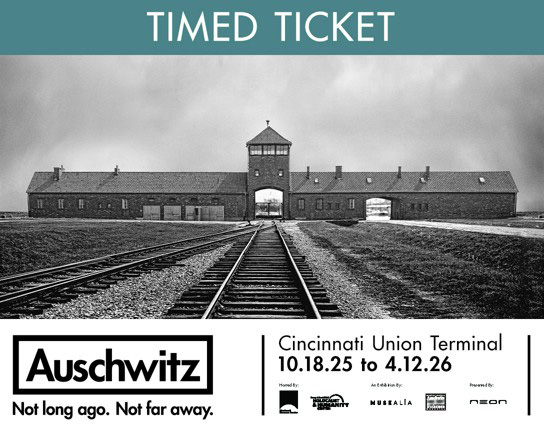Emerging Scholars Fellowship
Emerging Scholars Fellowship
The Backstory of The Emerging Scholar Fellowship
Learn more about the generous donor who launched this fellowship, Dr. Robert Miller, and why it is important.
Why Local History?
I first set foot in the reading room of the Cincinnati Historical Society (CHS) Library in the mid-1980s when it was still located in Mount Adams. I was working on my master’s thesis pertaining to civil defense activities in Cincinnati and Hamilton County during World War II. That work eventually turned into a broader study of the American home front during the war that became my dissertation topic. In the final stages of my PhD candidacy, the Cincinnati Museum Center hired me as a project historian to work on an exciting new exhibit called “Cincinnati Goes to War: A Community Responds to Total War, 1941-1945.” When I was busy creating content—pouring through manuscript collections and photos, interviewing the men and women who lived through the war-- for the exhibit, I began to realize how local history could act as a prism for understanding and interpreting national and even global events. After my short stint working for the Museum Center, I went on to teach courses in U.S. History at area universities for more than thirty years, I never tired of finding local history examples (people and places that my students could related to) to illustrate points about larger national and global trends.
Helping Emerging Scholars
When I earned my PhD, my wife already had an established career, so I never got a chance to get a tenure track job. For the next thirty plus years I cobbled together teaching assignments at area universities. I referred to myself as a “career adjunct.” I taught full time loads and quickly learned that there was no institutional support available for research. In 2024 I retired as an emeritus faculty from the University of Cincinnati. I am proud of the fact that on my own I have authored three books, four-chapter essays, and several article that reflect my interest in Cincinnati history.
Towards the end of my career, I decided I wanted to create a fellowship that would give back to the profession. I wanted to target young, emerging scholars who needed help with researching local history. My ideal beneficiary would fall into one of three categories: someone actively working on an advanced degree in history or public history; a recently minted PhD working as an adjunct professor; or an independent scholar.
Beginning in 2022, The Emerging Scholar Fellowship began awarding research stipends. Each calendar year, a committee evaluates the merits of research proposals submitted for consideration. The most qualified candidate receives a stipend of $2000 to aid them in their research project.
Ultimately, it is my fervent hope that this fellowship will help rekindle an interest in local history. I hope that the recipients make the most of their time working in a world class research library and archives. I also hope that they experience their own epiphany moment in their research when the connection between parochial, local history begins to meld with larger events or national and global significance.
Learn About Past Fellows
Andrew M. Houghtaling – 2024 Fellow
CMC Spotlight on Cincinnati Germans in the Civil War
Project Scope: Ninth Ohio Volunteer Infantry (MSS 505); Twenty-Eighth Ohio Volunteer Infantry (MSS fO37V28/Rfm v.1-3); Gustav Tafel Papers (MSS 1070); Gholson-Kittredge Papers (MSS fG427)
Summary and Goals:
The first goal of this project will consist of photographing, labeling, and categorizing the primary collections listed in bold above. I will follow this with updating the finding aids to provide more detail and better context to their contents. Finally, in the spring I will produce a series of videos which highlight these collections by drawing attention to the collections as one of many in CMCs holdings with a fascinating history.
At this point I am mostly finished with photographing, and having paused to finish my Master’s thesis and defense, will move on to the next phase after the holidays. The Ninth Ohio collection is very large (10 boxes), but many of the items are easily categorized, which will make for a very efficient process. At the close of the project I will provide CMC with a digital version of all the photos I have taken.
While the finding aids for the primary collections are generally helpful, they could be updated to provide better specifics on their contents to provide future researchers with a more efficient path to finding what they are searching for. While many of the government or U.S. Army forms are fairly straightforward in terms of understanding what they are and what their purpose is, there are also approximately sixty letters written to and by members of the regiment. These letters are written in nineteenth-century German Kurrentschrift. I will provide a transcription and translation for as many of these letters as I am able, as many of them contain information invaluable to genealogists.
At the close of the project, I will create a short series of videos that will accompany this project. As companion videos to a larger series I will be producing called Kurrent Events, they will highlight the value of this collection. Using actual nineteenth-century handwriting methods, I will reproduce a selected portion of text from these letters while sharing with viewers the meaning and significance of the passage. Should CMC be satisfied with the production of these videos, I would be happy to discuss the possibility of continuing the series past the end date of this project.
Learn more at https://www.ninthohio.com/research-archives
Become a CMC Member!
Be the first to see new exhibits, enjoy free admission to all of our museums and get the best price at all of our yearly events.

